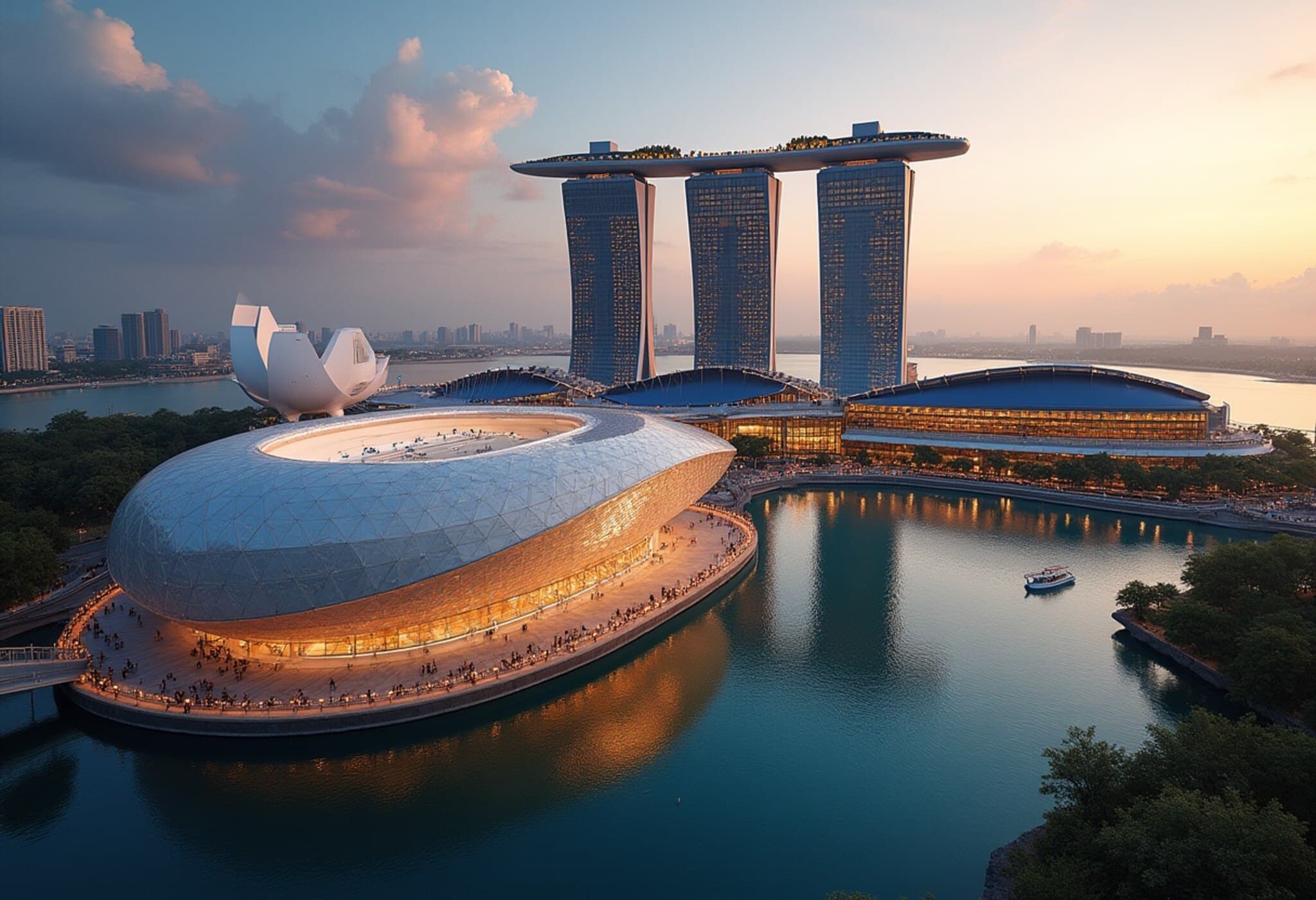Las Vegas Sands Breaks Ground on $8 Billion Ultra-Luxe Resort in Singapore
In a landmark development that signals Singapore’s rising prominence as a global tourism and entertainment hub, Las Vegas Sands has commenced construction on a lavish new resort valued at $8 billion. The groundbreaking ceremony on July 15, 2025, was attended by Singaporean Prime Minister Lawrence Wong and Las Vegas Sands co-founder Miriam Adelson, underscoring the project’s strategic significance for the city-state’s economy and the company’s expanding footprint across Asia.
A Distinct New Landmark, Not Just an Addition
While the opulent new resort sits adjacent to the iconic Marina Bay Sands property, Las Vegas Sands CEO Robert Goldstein emphasized that this is not simply an expansion of Marina Bay Sands. “If you came expecting to hear about an extension of MBS, you’ve come to the wrong party,” Goldstein said. “This is a brand-new building with a brand-new identity.” This statement marks a clear intention to position the development as a standalone, ultra-luxury destination that will redefine Singapore’s entertainment and hospitality landscape.
Architectural Masterpiece with Unparalleled Amenities
Designed by Safdie Architects — the visionary creators behind Marina Bay Sands and Jewel Changi Airport — the project promises bold architectural innovation. The centerpiece is a 55-story, all-suite resort featuring 570 lavish suites alongside high-end retail boutiques, state-of-the-art gaming facilities, and a sprawling 220,000 square feet of event and meeting space. Atop the resort will be the remarkable 76,000-square-foot rooftop, named the "Skyloop," which includes multiple infinity-edge pools, private cabanas, lush gardens, restaurants, and an observation deck accessible to the public.
Entertainment Takes Center Stage: The 15,000-Seat Arena
Adding a new dimension to Singapore’s entertainment scene, the resort will feature a 15,000-seat arena designed by Populous — the same team responsible for Las Vegas’ Sphere. This cutting-edge venue is poised to host world-class concerts, sporting events, and other live entertainment, reinforcing Singapore’s ambition to become a premier global destination for culture and sports.
Aligning with Singapore’s Vision for Sustainable and Dynamic Tourism
The development dovetails with Singapore’s broader strategic push to diversify and enrich its tourism offerings. According to Singapore’s recently unveiled Tourism Sector Development Plan, the government is targeting an increase in “MICE” travelers (meetings, incentives, conferences, and exhibitions) while simultaneously attracting leisure tourists through unique experiences and live entertainment.
- Premier Meeting Space: The resort’s extensive meeting facilities will cater to international conferences, contributing significantly to Singapore’s MICE economy.
- Enhanced Leisure Appeal: Luxurious accommodations and the entertainment arena provide compelling reasons for tourists seeking immersive experiences.
- Economic Impact: The project is expected to generate thousands of jobs and stimulate related industries such as retail, hospitality, and cultural events.
Contextualizing Singapore’s Tourism Renaissance
This latest investment builds on a series of high-profile tourism initiatives that have marked Singapore’s post-pandemic revival. Earlier this year, the launch of Raffles Sentosa Singapore, the island’s first all-villa resort, alongside attractions like Rainforest Wild Asia and the soon-to-open upgraded Oceanarium, has revitalized visitor interest. The new Las Vegas Sands resort complements these offerings, positioning Singapore firmly at the crossroads of business and leisure travel in Asia.
Expert Insight: What This Means for the Regional Hospitality Market
From an expert perspective, the scale and ambition of this project signal a shifting dynamic in the Asia-Pacific hospitality and entertainment sectors. As regional competition intensifies — with destinations like Macao, Tokyo, and Seoul investing heavily in similar integrated resorts — Singapore’s ability to marry luxury, innovation, and sustainability will be critical. The involvement of world-renowned architects and entertainment designers highlights a continued emphasis on delivering experiences that resonate globally while respecting local urban planning and environmental goals.
Furthermore, this development raises important questions about how mega-resort projects balance economic stimulus with challenges such as urban congestion, environmental stewardship, and cultural integration. Singapore’s careful, strategic approach will likely serve as a blueprint for other cities aiming to expand integrated resorts responsibly.
Looking Ahead: Timeline and Anticipated Impact
Construction is underway, with completion expected in the coming years. Once operational, the resort and arena are expected to be major draws for tourists, business travelers, and entertainment seekers alike — injecting fresh vitality into Singapore’s economy and reshaping the city-state’s global reputation.
Editor’s Note
The groundbreaking of Las Vegas Sands’ new ultra-luxury resort in Singapore marks a pivotal moment for the region’s tourism and entertainment landscape. This isn’t just another skyscraper—it represents a bold vision to blend luxury hospitality, high-profile live entertainment, and sustainable urban development. As global travel patterns evolve, Singapore’s strategy highlights the importance of innovation, cultural resonance, and multi-dimensional tourism experiences. Observers should watch closely how this project navigates the challenges of scale, sustainability, and market competition to become a defining success in Asia’s integrated resort market.











